Beaufort County schools talk discipline. How many suspensions and what’s the process?
Beaufort County schools’ 2022-23 disciplinary report shows a decrease in suspensions, but an increase in expulsions and alternative placements.
Expulsions have increased 420% from a count of 10 in the school year ending in the spring of 2022 to 57 through April 20, 2023. Conversely, out-of-school suspensions have decreased by more than 3,000 in the same time period peaking at nearly 5,000 last year but fell to fewer than 2,000 so far this year. This represents a 61% decrease in the number of times students are not allowed back in school until the suspension has been served.
The data points towards a national trend of the COVID-19 pandemic negatively impacting students’ behavioral development.
“(For some current ninth graders) this is their first full year back in school since fifth grade,” Executive Director of Secondary Education Chad Cox said. “There’s going to be some transition that they struggle with a little bit when you’ve been virtual for X number of years.”
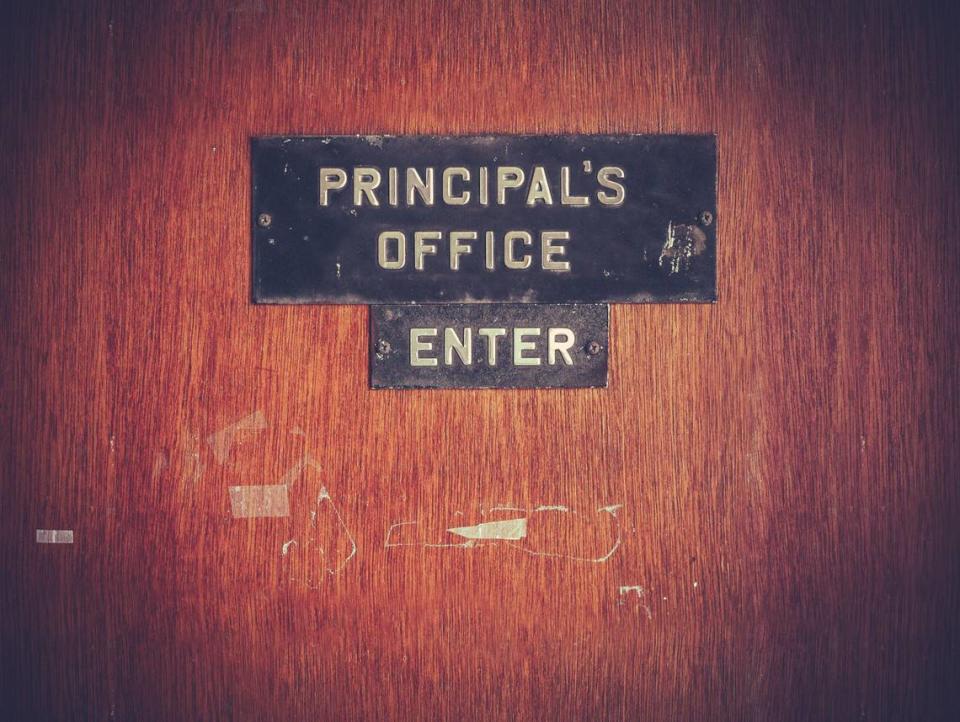
Beaufort County schools went virtual towards the end of the 2019-20 school year, and returned to full in-person instruction January 2021. For the 2021-22 school year, students’ attendance was often interrupted with quarantine restrictions.
Nationally, 84% of public schools either agree or strongly agree that the COVID-19 pandemic negatively impacted students’ behavioral development, according to the Institute of Education Sciences. In the South it’s 82%.
Student Services Officer Juliet White said that the districts disciplinary process is meant to keep students in the classroom while still ensuring a safe school environment.
All numbers for the 2022-23 school year are as of April 20, and don’t include disciplinary actions taken from then until the school year ends June 3.
Office referrals
If a student violates the code of conduct, their teacher will go into the schools’ system and make a referral to the administration, according to White. It’s the first step in the disciplinary process.
These referrals have gone down since before students left in-person instruction due to the pandemic.
“Sometimes teachers write a minor infraction and they may be documenting that they called a parent,” Cox said. “Not every referral is going to result in what we we consider (out-of-school suspension) or (in-school suspension) as every student has the right to due process.”
From there, the administration determines what their consequence is as outlined in the progressive discipline plan. There are different progressive discipline plans for elementary, middle and high school.
“It doesn’t mean they necessarily physically sent the kid out of their classroom down to the front office,” White said.
For example, if a high school student litters for the first time, they wouldn’t be sent to the administration, according to the discipline plan.
The number of officer referrals per year, according to the district are:
2018-19 — 25,181
2019-20 — 16,641
2021-22 — 17,013
2022-23* — 17,565
*through April 20, 2023
Disciplinary hearings
A disciplinary hearing is sometimes the result of a referral. It’s the step in the process that determines whether a student will be suspended, expelled or alternatively placed.
The number of disciplinary hearings have gone up since students returned back from online instruction.
“Behavioral Misconduct” is “Level 1 Misconduct” and includes infractions such as tardiness and cutting class. These wouldn’t normally result in a disciplinary hearing, according to the regulations.
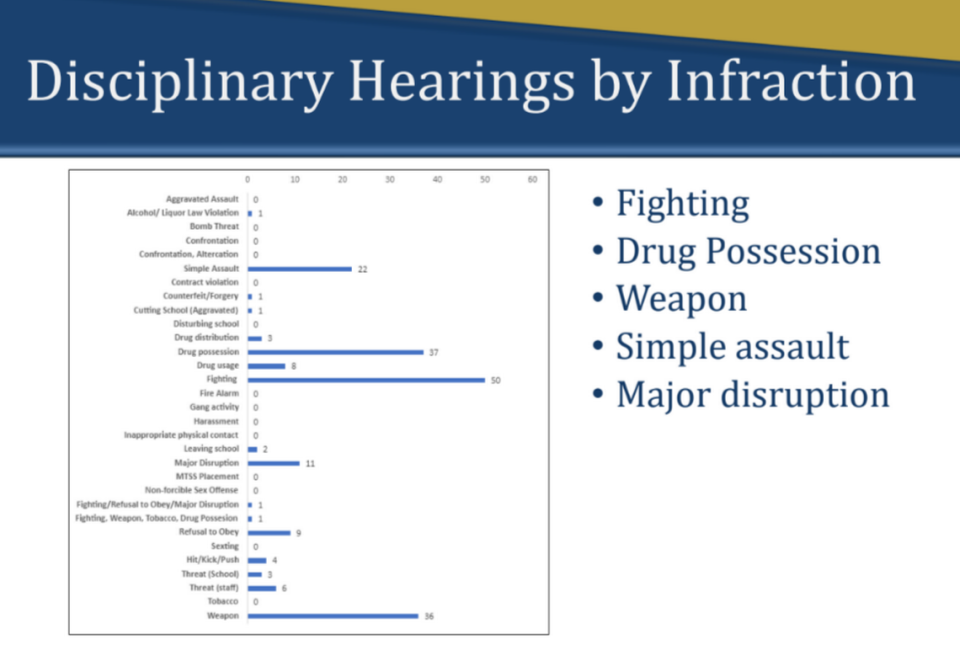
“Disruptive Conduct” is “Level 2 Misconduct.” and includes infractions such as fighting or stealing. These sometimes result in disciplinary hearings, but not always, according to the regulations.
Disciplinary hearings occur when students commit “Level 3 Misconduct,” according to White. The South Carolina School Discipline Laws and Regulations define “Criminal Conduct” as “Level 3 Misconduct.” This includes infractions such as fighting, drug or weapon possession, simple assault or a major disruption, which are the top reasons for disciplinary hearings so far this year.
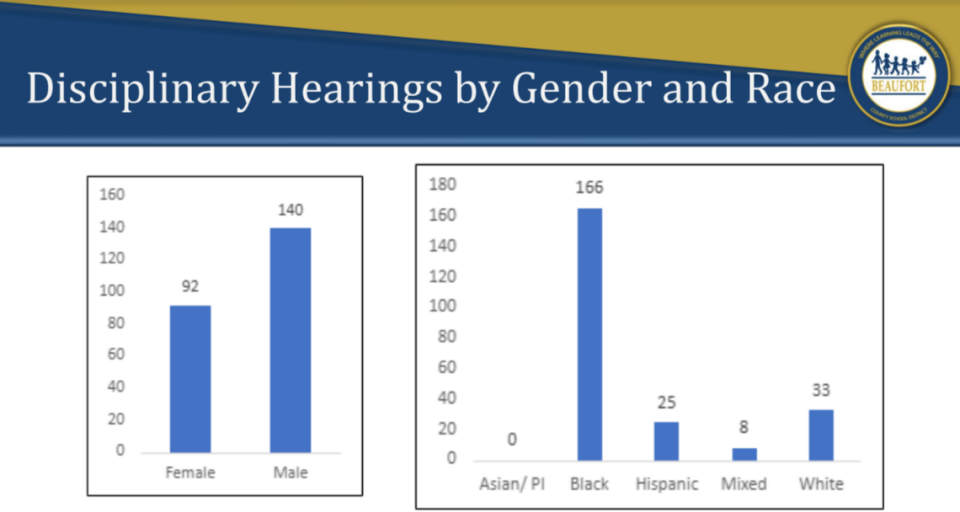
The district has two disciplinary hearing officers, who haven’t had contact with the students before to ensure impartiality. These officers hear the students’ cases and decide what disciplinary actions will taken.
“The family would be there and then the school administration would be there that dealt with the incident or (incidents) over time,” Cox said. He said the officer reviews any documentation and hears both the administration and students’ side of what happened.
The number of disciplinary hearings per year, according to the district are:
2018-19 — 248
2019-20 — 193
2021-22 —163
2022-23* — 232
In-school Suspensions
During in-school suspensions, students continue to do their classroom assignments, only separately from the regular classroom.
The number of in-school suspensions have gone down consistently since the 2018-19 school year.
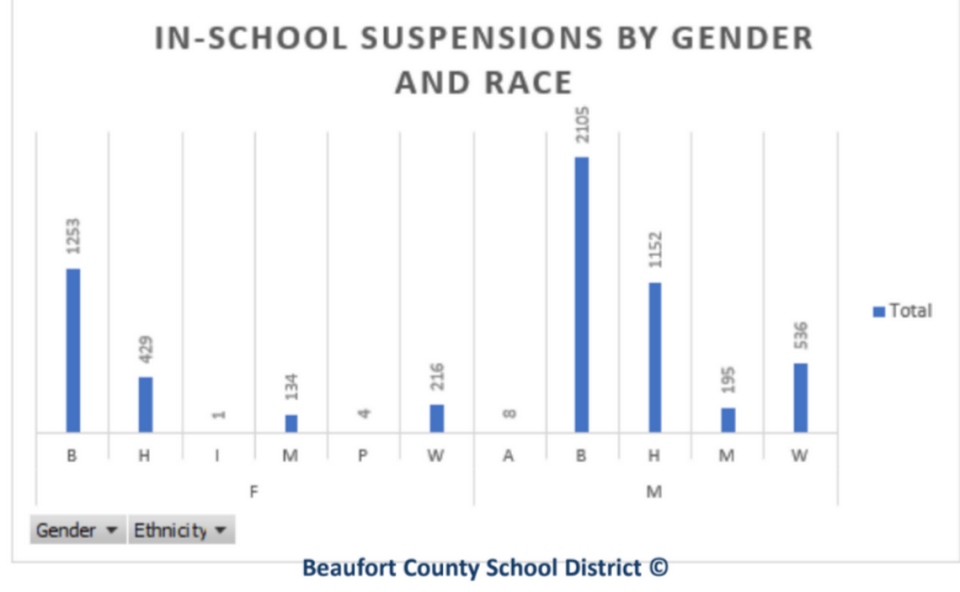
The number of in-school suspensions per year, according to the district are:
2018-19 — 12,541
2019-20 — 7,437
2021-22 —8,000
2022-23* — 6,033
Out-of-school suspensions
During out-of-school suspensions students aren’t allowed in school or on school property. They can’t attend school related activities, even if they are off campus and are unable to continue their regular assignments. However, students can take materials home, and their teacher will give them missed assignments. When the student returns to school they’re expected to complete examinations and assignments within the same number of days as the suspension period.
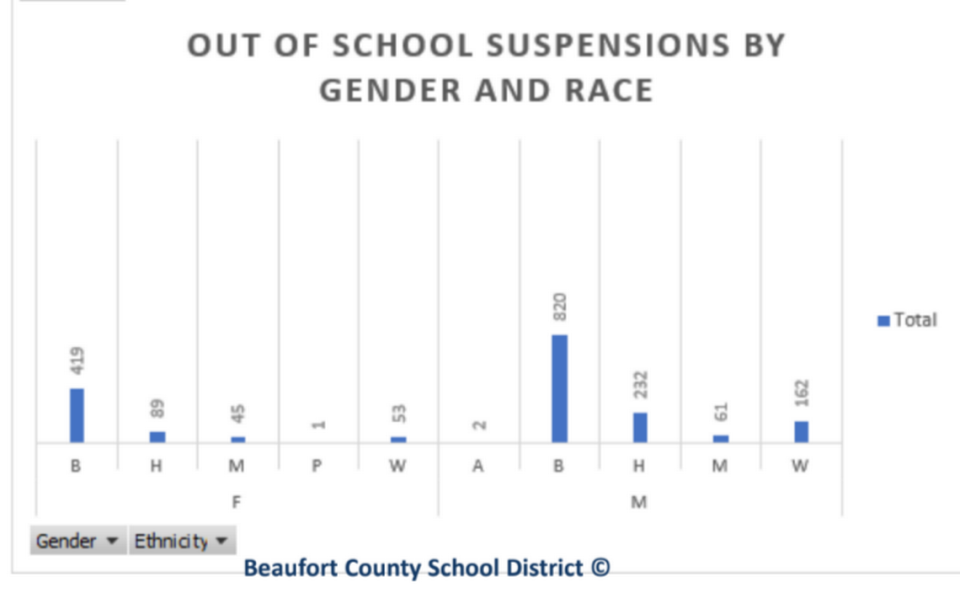
The number of out-of-school suspensions have gone down by over 3,000 since last year.
2018-2019 — 4,630
2019-20 — 3,282
2021-22 —4,903
2022-23* — 1,884
Expulsions
When a student is expelled, they’re removed from the district for up to one year. They can’t be expelled for more than one year, and after their prescribed expulsion they have a re-entry meeting to determine next steps, according to White.
The number of expulsions have gone up 500% since last year.
The number of expulsions each year, according to the district are:
2018-2019 — 17
2019-20 — 18
2021-22 —10
2022-23* — 52
Alternative placement: Right Choices
Instead of being expelled, students can be placed in Right Choices. It provides students with an “alternative educational setting” after being removed from their home campus, according to the Right Choices Handbook.
It’s a separate building within the county which the district provides transportation to for students. There, they take online or in-person classes. The number of students referred to the program has more than doubled since last year.
The number of student referred to alternative placement each year, according to the district are:
2018-2019 — 162 2019-20 — 66
2021-22 —86
2022-23* — 180

